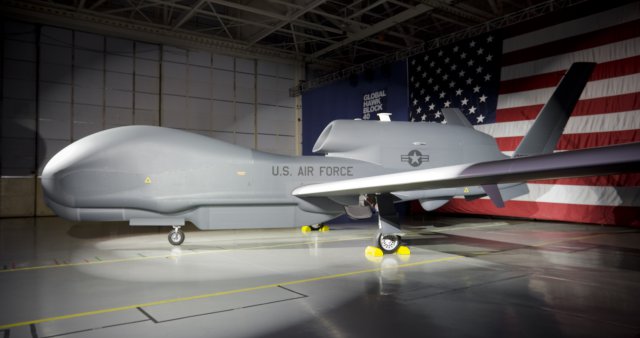RQ-4B Global Hawk Block 40 Photo: Northrop Grumman
The North Atlantic Treaty Organization agreed on Friday to acquire its first fleet of unarmed unmanned aircraft under a long-sought deal that defence officials said would help fill a gap in alliance surveillance capabilities exposed by last year’s military campaign in Libya.
NATO Secretary-General Anders Fogh Rasmussen said that under an agreement reached at a meeting of NATO defence ministers in Brussels, a group of nations would acquire five Global Hawk RQ-4B reconnaissance aircraft produced by U.S. firm Northrop Grumman and powered by Rolls-Royce engines.
Northrop Grumman ISS International is the main contractor, while the German arm of EADS, Italy’s Galileo Avionica — a unit of Finmeccanica — and the Canadian arm of General Dynamics are also involved.
The 13 countries participating in the project are Bulgaria, the Czech Republic, Estonia, Germany, Italy, Latvia, Lithuania, Luxembourg, Norway, Romania, Slovakia, Slovenia, and the U.S.
A senior U.S. defence official said the 13 countries will provide the five Global Hawks and a ground command-and-control system, at a cost estimated at 1.2 billion euros, or about $1.5 billion, to the NATO alliance.The U.S. will cover just over 40% of the acquisition costs, the official said.
The system will be NATO-owned and operated and all 28 alliance members will cover future operating costs, the official said. The deal follows 19 years of debate within the alliance over how to split the bill for surveillance planes.
U.S. Defense Secretary Leon Panetta, who has pressed NATO to acquire aircraft so that it does not have to rely on the Pentagon’s heavily-used fleet, praised the agreement. “It’s good deal, big deal, done deal,” a senior U.S. defense official quoted Mr. Panetta as saying at the end of Friday’s debate at NATO.
NATO’s operation in Libya last year put a spotlight on the alliance’s shortage of unmanned surveillance aircraft. During the campaign, the NATO had to use U.S. aircraft.
The senior U.S. defense official said NATO’s fleet will not be fielded until around 2017. While they will mainly be based in Sigonella, Italy, they will be able to be deployed anywhere NATO needs them, the official said.
Sources: The Wall Street Journal; Wired:Danger Room

